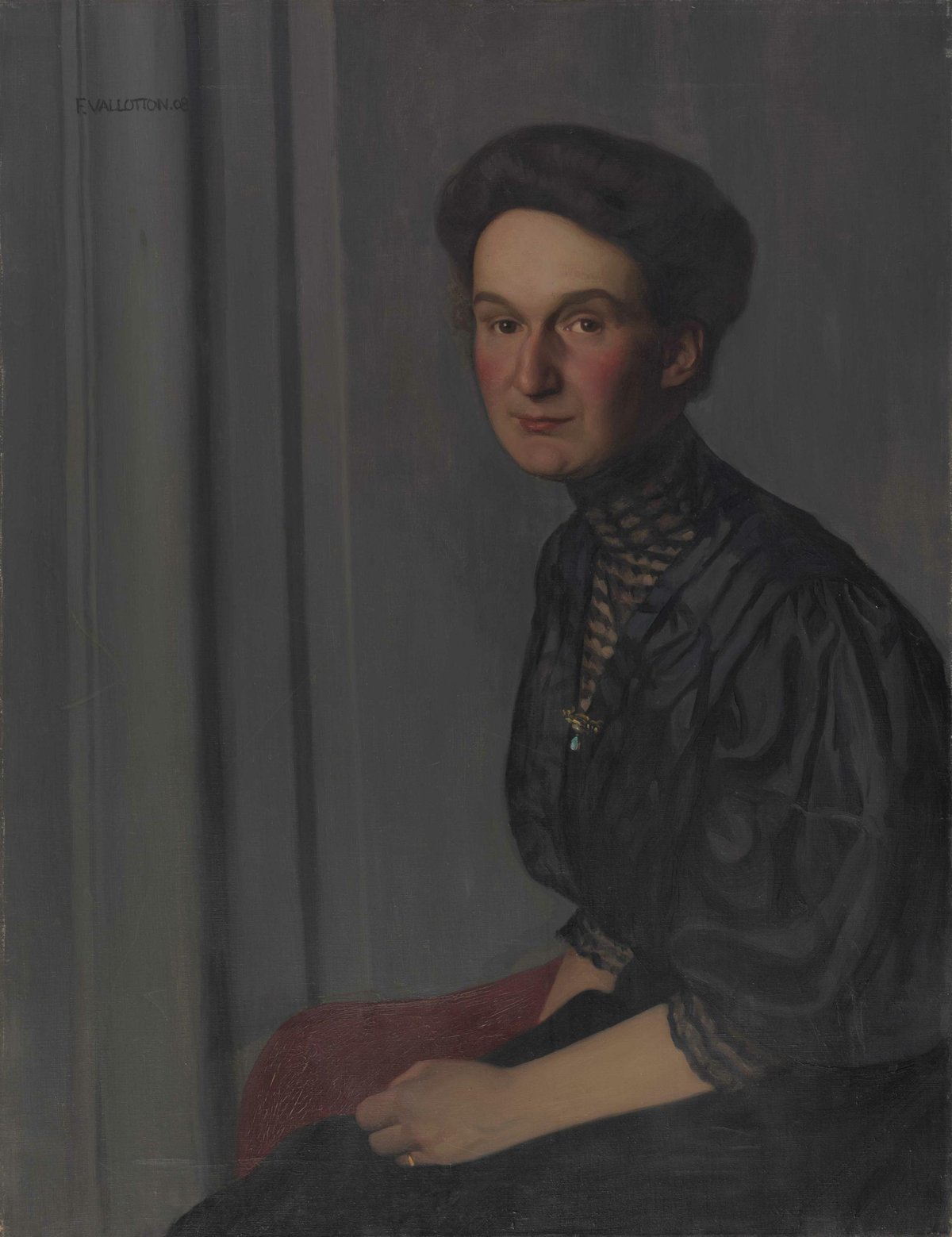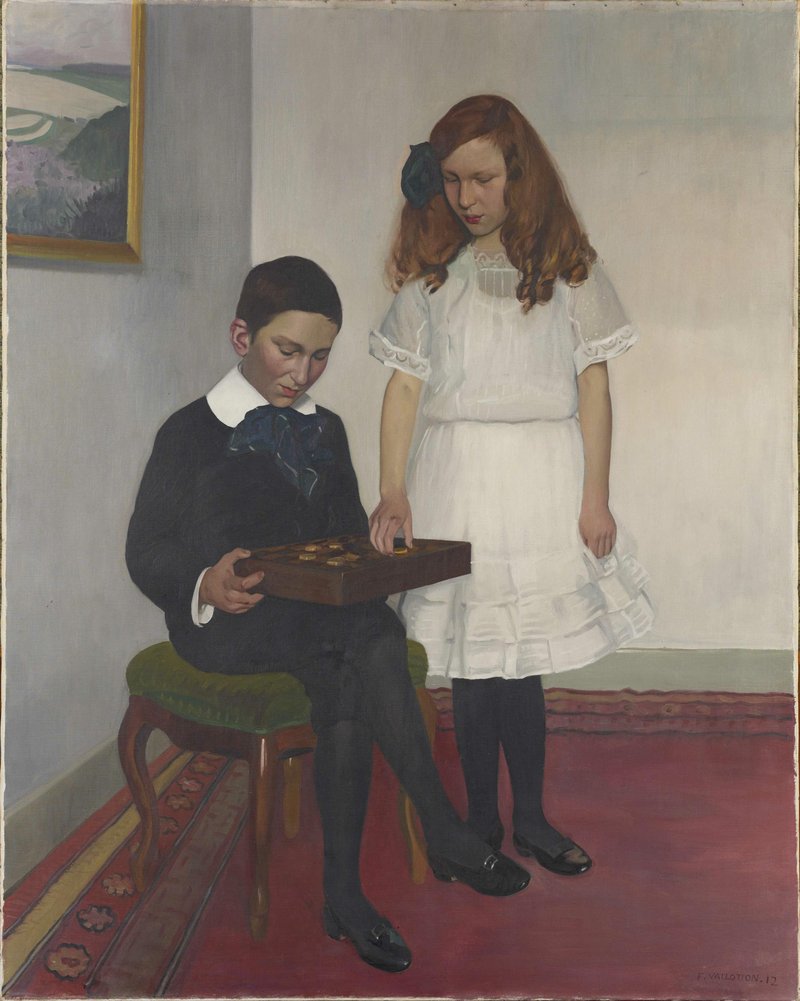Vallotton – Portrait of Hedy Hahnloser

Félix Vallotton, Porträt Hedy Hahnloser, 1908
Kunst Museum Winterthur, Hahnloser/Jaeggli Stiftung
Foto: Reto Pedrini, Zürich

Félix Vallotton, Les enfants Hans et Lisa Hahnloser, 1912
Kunst Museum Winterthur, Hahnloser/Jaeggli Stiftung
Foto: Reto Pedrini, Zürich
The close relationship between the Hahnloser family and the artist Félix Vallotton is revealed in particular by the portraits of the family, which were painted within four years of each other. Shortly after her first visit to Vallotton's Paris studio in 1908, Hedy Hahnloser asked to be portrayed by him. In January of the following year, it was her husband Arthur's turn and three years later the couple ordered a double portrait of their children Lisa and Hans from the artist, who had now become a friend.
The portrait of Hedy Hahnloser was painted in Winterthur in September 1908. The painter arrived by train and stayed at the Villa Flora for almost two weeks. She, who had trained as a painter herself, was intrigued by his style of painting. Vallotton worked rather unconventionally, painting the canvas from top to bottom and hardly ever retouching or correcting what he had already painted, adding merely a few highlights.
But she was enthusiastic about him not only from a technical point of view, she was also impressed by the way he approached her as a person. "He hardly knew his model," she later recalled. "He had to get used to a milieu, a new country after twenty years in Paris, to a type of woman who was very different from his Parisian women with their pretty but often artificial grace." While the portrait of her husband was rather classic – he is depicted from the front, well-dressed and with a serious look – Hedy is captured in a very peculiar position, slightly bent forward. It seems almost as if she is about to stand up, at least a certain tension can be detected. Evidently Vallotton was indeed dealing here with a somewhat unusual "type of woman", as Hedy had described it. The dark dress and the sober, gray background radiate Swiss modesty, and it is her gaze, together with the powerful pose, that endows the sitter with character.


